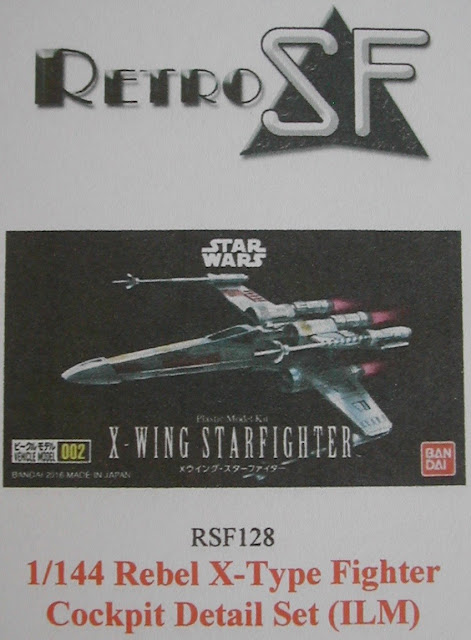Lockheed F-104J/DJ Starfighter 'Eiko In Japan' (2in1)
The F-104 Starfighter was an American jet fighter, designed by the Lockheed Aircraft Company in early 1950s. Radical in concept, it was the first operational interceptor capable of sustained speeds above Mach 2. Its prototype flew in 1954 and the first series aircraft were delivered four years later. The first single-seater Starfighters were designated F-104A/CF-104, C and R/TF-104G, while the trainers were called F-104B, D/CF-104D, F and TF-104G.
The Japan Air Self-Defense Force took delivery of a total of 210 all-weather interceptor Starfighters designated F-104J. Similar to the F-104G, 3 a/c were Lockheed-built, while the rest was supplied by Mitsubishi; production was underway in the period 1962-67. Twenty F-104DJ two-seat trainers, similar to the F-104Ds, were provided by Lockheed and assembled in Japan during 1962-64.
The F-104 was an all-metal mid-wing monoplane powered by a J79 turbojet (locally-built units were fitted to Japanese a/c). It had two fuselage-side air intakes, small thin wings with a pronounced anhedral and a T-tail. Its nose undercarriage retracted forward on single-seaters, while that of the two-seat version retracted rearward. The F-104J/DJ had the fin area increased, compared to that of the A or C model. The single-seater mounted one multi-barrel gun in the nose and two Sidewinder missiles at each wingtip and/or below the fuselage. Drop tanks could also be carried.
The Japanese F-104s entered service in 1966 and the last one was retired in the spring of 1986. Beginning in 1988, 14 a/c were converted to the UF-104J/JA remotely-controlled drones for aerial target practice. Some 27 F-104J/DJs were also supplied to Taiwan to serve with the RoCAF.
Colour schemes included in the kit:
1) Lockheed (Mitsubishi-built) F-104J Starfighter, s/n 46-8575 (c/n 3075), Black 575/46-8575, No.207 FIS (Fighter Interceptor Squadron, Hikōtai), No.83 Air Wing (Kōk�«dan), JASDF (Japan Air Self-Defense Force, Kōk�«jieitai), Naha Air Base, Okinawa, 1983-84
2) Lockheed (Mitsubishi-built) F-104J Starfighter, s/n 76-8700 (c/n 3200), Black 700/76-8700, No.207 FIS (Fighter Interceptor Squadron, Hikōtai), No.83 Air Wing (Kōk�«dan), JASDF (Japan Air Self-Defense Force, Kōk�«jieitai), Naha Air Base, Okinawa, late 1984/early 1985
3) Lockheed (Mitsubishi-built) F-104J Starfighter, s/n 36-8526 (c/n 3026), Black 526/36-8526, No.204 FIS (Fighter Interceptor Squadron, Hikōtai), No.5 Air Wing (Kōk�«dan), JASDF (Japan Air Self-Defense Force, Kōk�«jieitai), Tsuiki Air Base, Fukuoka, 1982-83
4) Lockheed (Mitsubishi-built) UF-104J (QF-104J) Starfighter, s/n 46-8592 (renumbered as 46-3592, c/n 3092), Black 592/46-8592, ADTW (Air Development and Test Wing, Hikōkaihatsujikkendan), JASDF (Japan Air Self-Defense Force, Kōk�«jieitai), Gifu and Iwo Jima Air Bases, late 1991 - spring 1997
5) Lockheed F-104DJ Starfighter, s/n 16-5004 (c/n 5404), Black 004/26-5004, No.206 FIS (Fighter Interceptor Squadron, Hikōtai), No.7 Air Wing (Kōk�«dan), JASDF (Japan Air Self-Defense Force Kōk�«jieitai), Hyakuri Air Base, Ibaraki, 1976
6) Lockheed F-104DJ Starfighter, s/n 36-5018 (c/n 5418), Black 018/36-5018, No.202 FIS (Fighter Interceptor Squadron, Hikōtai), No.5 Air Wing (Kōk�«dan), JASDF (Japan Air Self-Defense Force, Kōk�«jieitai), Nyutabaru Air Base, Miyazaki, during ACM (Air Combat Manoeuvering) training, November 1980
Two injection-moulded kits are included in this box; single- and two-seater kit contains 38 and 41 parts, respectively, and one clear part (the cockpit canopy) for each model. One additional sprue, with 11 new parts for single-seater kit, is also supplied. A comprehensive instruction leaflet and a decal sheet are included.
https://www.hannants.co.uk/product/MKM144106
£17.99









































